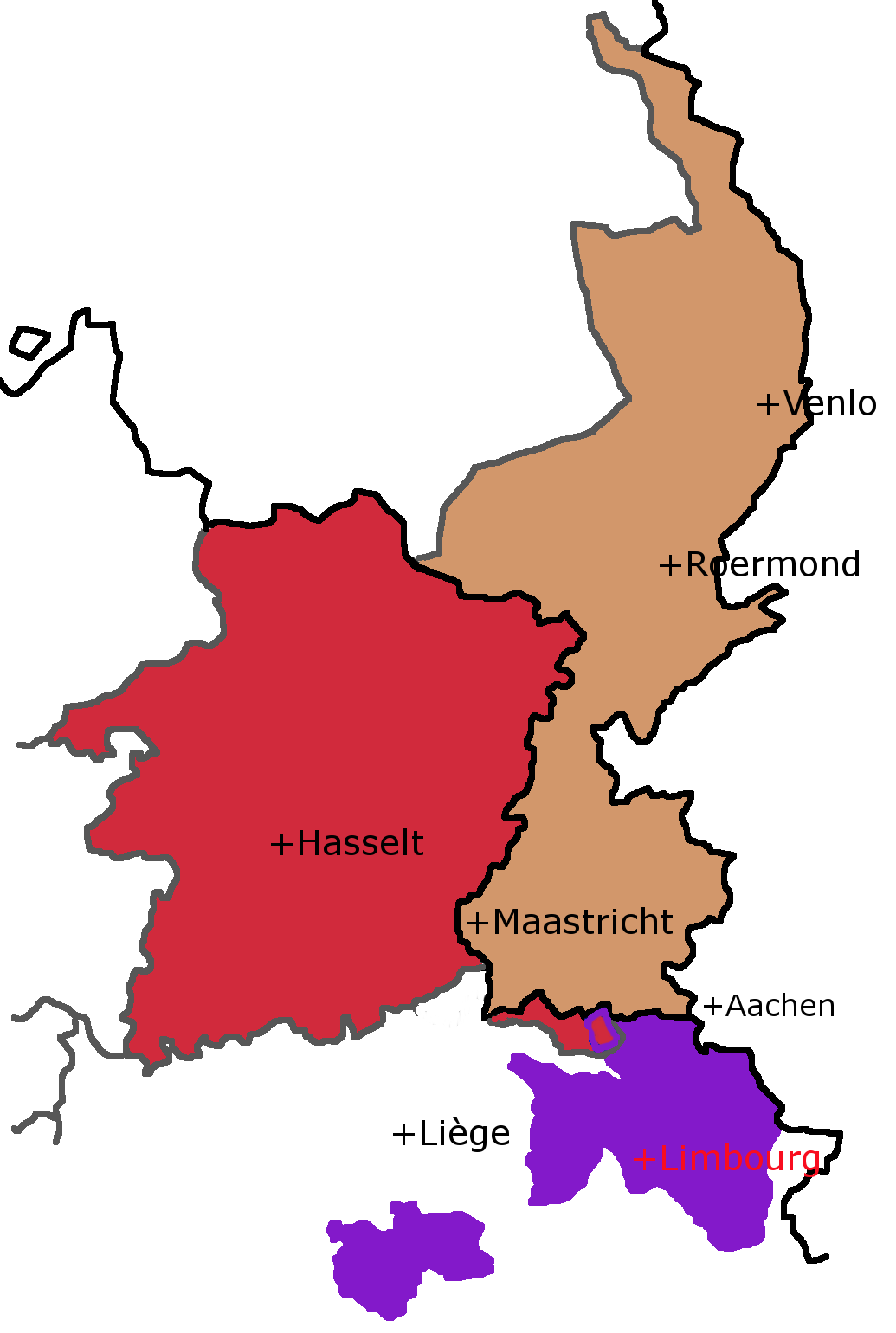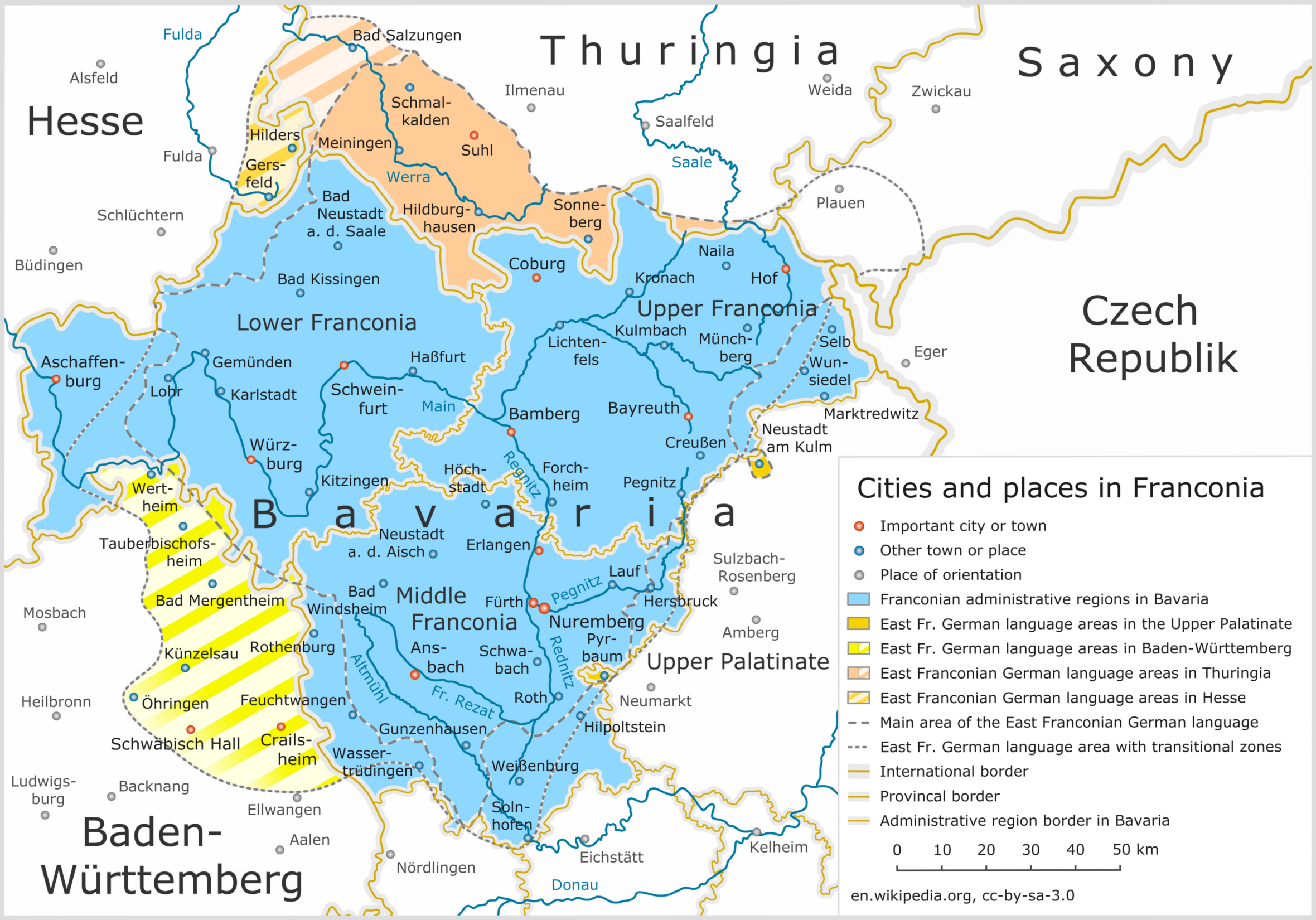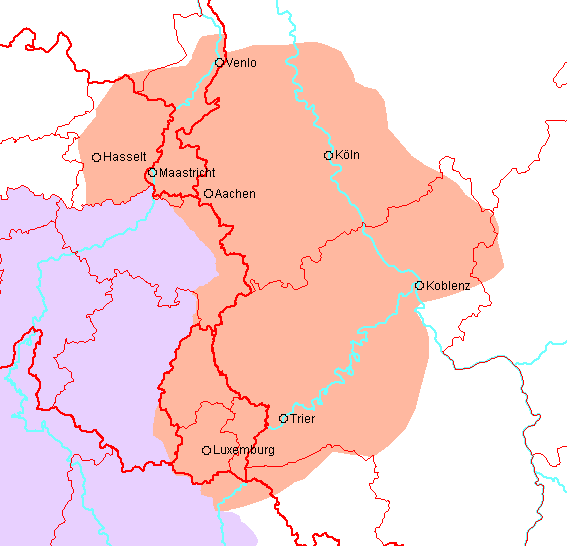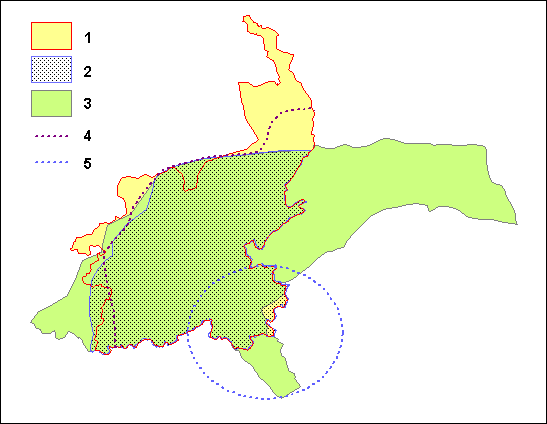|
Middle Franconian
Central or Middle Franconian () refers to the following continuum of West Central German dialects: * Ripuarian (spoken in the German state of North Rhine-Westphalia, in eastern Belgium, and the southeastern tip of Dutch Limburg) * Moselle Franconian (in German Rhineland-Palatinate and Saarland, in eastern Belgium and French Lorraine) ** Luxembourgish (in Luxembourg and the adjacent areas of Belgium and France) Luxembourgish is often included within Moselle Franconian, but sometimes regarded as a separate group. The German-speaking Community of Belgium comprises both Ripuarian and Moselle Franconian dialects. The Central Franconian dialects are part of a continuum stretching from the Low Franconian language area in the northwest to the Rhine Franconian dialects in the southeast. Along with Limburgish, Central Franconian has a simple tone system called pitch accent. The Central Franconian language area is not to be confused with the Bavarian administrative district of Middl ... [...More Info...] [...Related Items...] OR: [Wikipedia] [Google] [Baidu] |
North Rhine-Westphalia
North Rhine-Westphalia or North-Rhine/Westphalia, commonly shortened to NRW, is a States of Germany, state () in Old states of Germany, Western Germany. With more than 18 million inhabitants, it is the List of German states by population, most populous state in Germany. Apart from the city-states (Berlin, Hamburg and Bremen), it is also the List of German states by population density, most densely populated state in Germany. Covering an area of , it is the List of German states by area, fourth-largest German state by size. North Rhine-Westphalia features 30 of the 81 German municipalities with over 100,000 inhabitants, including Cologne (over 1 million), the state capital Düsseldorf (630,000), Dortmund and Essen (about 590,000 inhabitants each) and other cities predominantly located in the Rhine-Ruhr metropolitan area, the largest urban area in Germany and the fourth-largest on the European continent. The location of the Rhine-Ruhr at the heart of the European Blue Banana make ... [...More Info...] [...Related Items...] OR: [Wikipedia] [Google] [Baidu] |
Limburg (Netherlands)
Limburg (; ), also known as Dutch Limburg, is the southernmost of the twelve provinces of the Netherlands. It is bordered by Gelderland to the north and by North Brabant to the west. Its long eastern boundary forms the border with the German state of North Rhine-Westphalia. To the west is the border with the Belgian province of Limburg, part of which is delineated by the river Meuse. To the south, Limburg is bordered by the Belgian province of Liège. The Vaalserberg is the extreme southeastern point, the tripoint of the Netherlands, Germany, and Belgium. Limburg had a population of about 1,128,000 in January 2023. Its main municipalities are the provincial capital Maastricht (population 120,837 as of January 2022), Venlo (population 102,176) in the northeast, as well as Sittard-Geleen (population 91,760, bordering both Belgium and Germany) and Heerlen (population 86,874) in the south. More than half of the population, approximately 650,000 people, live in the south of Limb ... [...More Info...] [...Related Items...] OR: [Wikipedia] [Google] [Baidu] |
East Franconian German
East Franconian ( ), usually referred to as Franconian (' ) in German, is a dialect spoken in Franconia, the northern part of the federal state of Bavaria and other areas in Germany around Nuremberg, Bamberg, Coburg, Würzburg, Hof, Bayreuth, Meiningen, Bad Mergentheim, and Crailsheim. The major subgroups are ' (spoken in Lower Franconia and southern Thuringia), ' (spoken in Upper and Middle Franconia) and ' (spoken in some parts of Middle Franconia and Hohenlohe). Until the wholesale expulsion of Germans from Bohemia, the dialect was also spoken around Saaz (today: Žatec). In the transitional area between Rhine Franconian in the northwest and the Austro-Bavarian dialects in the southeast, East Franconian has elements of Central German and Upper German. The same goes only for South Franconian German in adjacent Baden-Württemberg Baden-Württemberg ( ; ), commonly shortened to BW or BaWü, is a states of Germany, German state () in Southwest Germany, east of ... [...More Info...] [...Related Items...] OR: [Wikipedia] [Google] [Baidu] |
Middle Franconia
Middle Franconia (, ) is one of the three administrative regions of Franconia, Germany, in the west of Bavaria bordering the state of Baden-Württemberg. The administrative seat is Ansbach; the most populous and largest city is Nuremberg. Subdivisions The region is divided into seven districts ('Landkreise') and five independent cities ('Kreisfreie Städte'). The lowest level is divided into 210 municipalities (including five cities). Independent cities * Ansbach * Erlangen * Fürth * Nuremberg * Schwabach Districts * Ansbach * Erlangen-Höchstadt * Fürth * Neustadt (Aisch)-Bad Windsheim * Nürnberger Land * Roth * Weißenburg-Gunzenhausen History After the founding of the Kingdom of Bavaria the state was totally reorganised and, in 1808, divided into 15 administrative government regions (German: Regierungsbezirke (singular Regierungsbezirk)), in Bavaria called Kreise (singular: Kreis). They were created in the fashion of the French departements, quite even in s ... [...More Info...] [...Related Items...] OR: [Wikipedia] [Google] [Baidu] |
Bavaria
Bavaria, officially the Free State of Bavaria, is a States of Germany, state in the southeast of Germany. With an area of , it is the list of German states by area, largest German state by land area, comprising approximately 1/5 of the total land area of Germany, and with over 13.08 million inhabitants, it is the list of German states by population, second most populous German state, behind only North Rhine-Westphalia; however, due to its large land area, its population density is list of German states by population density, below the German average. Major cities include Munich (its capital and List of cities in Bavaria by population, largest city, which is also the list of cities in Germany by population, third largest city in Germany), Nuremberg, and Augsburg. The history of Bavaria includes its earliest settlement by Iron Age Celts, Celtic tribes, followed by the conquests of the Roman Empire in the 1st century BC, when the territory was incorporated into the provinces of Ra ... [...More Info...] [...Related Items...] OR: [Wikipedia] [Google] [Baidu] |
Pitch Accent
A pitch-accent language is a type of language that, when spoken, has certain syllables in words or morphemes that are prominent, as indicated by a distinct contrasting pitch (music), pitch (tone (linguistics), linguistic tone) rather than by volume or length, as in some other languages like English language, English. Pitch-accent languages also contrast with fully tonal languages like Vietnamese language, Vietnamese, Thai language, Thai and Standard Chinese, in which practically every syllable can have an independent tone. Some scholars have claimed that the term "pitch accent" is not coherently defined and that pitch-accent languages are just a sub-category of tonal languages in general. Languages that have been described as pitch-accent languages include: most dialects of Serbo-Croatian, Slovene language, Slovene, Baltic languages, Ancient Greek, Vedic Sanskrit, Tlingit language, Tlingit, Turkish language, Turkish, Japanese language, Japanese, Limburgish, Norwegian language, No ... [...More Info...] [...Related Items...] OR: [Wikipedia] [Google] [Baidu] |
Limburgish
Limburgish ( or ; ; also Limburgian, Limburgic or Limburgan) refers to a group of South Low Franconian Variety (linguistics), varieties spoken in Belgium and the Netherlands, characterized by their distance to, and limited participation in the formation of, Standard Dutch. In the Limburg (Netherlands), Dutch province of Limburg, all dialects, despite their differences, have been given collectively a regional language status, including those comprising "Limburgish" as used in this article. Limburgish shares many vocabulary and grammatical characteristics with both German language, German and Dutch language, Dutch. A characteristic feature of many dialects of Limburgish is the occurrence of a Lexical rule, lexical Pitch accent (intonation), pitch accent (Franconian tone accent), which is shared with the adjacent Central Franconian dialects of German. Etymology The name ''Limburgish'' (and variants of it) derives only indirectly from the now Belgian town of Limbourg (''L ... [...More Info...] [...Related Items...] OR: [Wikipedia] [Google] [Baidu] |
Rhine Franconian
__NOTOC__ Rhenish Franconian or Rhine Franconian ( ) is a dialect chain of West Central German. It comprises the varieties of German spoken across the western regions of the states of Saarland, Rhineland-Palatinate, northwest Baden-Württemberg, and Hesse in Germany. It is also spoken in northeast France, in the eastern part of the of Moselle in the Lorraine region, and in the north-west part of Bas-Rhin in Alsace. To the north, it is bounded by the Sankt Goar line (or '' line'') which separates it from Moselle Franconian; to the south, it is bounded by the Main line which is also referred to as the ''Speyer line'' which separates it from the Upper German dialects. Subgroups Cornelia Stroh: ''Sprachkontakt und Sprachbewußtsein: Eine soziolinguistische Studie am Beispiel Ost-Lothringens.'' Gunter Narr Verlag Tübingen, Tübingen, 1993, p. 34 * or Hessian * ** or Palatine German ** or Lorraine Franconian See also * Saarland (section ''Local dialect'') * Moselle Francon ... [...More Info...] [...Related Items...] OR: [Wikipedia] [Google] [Baidu] |
Low Franconian Languages
In historical and comparative linguistics, Low Franconian is a linguistic category used to classify a number of historical and contemporary West Germanic varieties closely related to, and including, the Dutch language. Most dialects and languages included within this category are spoken in the Netherlands, northern Belgium (Flanders), in the Nord department of France, in western Germany (Lower Rhine), as well as in Suriname, South Africa and Namibia. Terminology ''Low Franconian'' is a purely linguistic category and not used as a term of self-designation among any of the speakers of the Germanic dialects traditionally grouped within it. Within the field of historical philology, the terminology for the historical phases of Low Franconian is not analogous to the traditional Old High German / Middle High German and Old Low German / Middle Low German dichotomies, with the terms Old Dutch and Middle Dutch commonly being preferred to ''Old Low Franconian'' and ''Middle Low Francon ... [...More Info...] [...Related Items...] OR: [Wikipedia] [Google] [Baidu] |
German-speaking Community Of Belgium
The German-speaking Community (, , DG), also known as East Belgium ( ), is one of the three Communities, regions and language areas of Belgium, federal communities of Belgium. The community is composed of nine municipalities in Liège Province, Wallonia, within the Eupen-Malmedy region in Eastern Belgium. The primary language of the community is German, making this one of the three official languages in Belgium. Traditionally the community and the wider area around it forms an intersection of various local languages and/or dialects, namely Limburgish language, Limburgish, Ripuarian language, Ripuarian and Moselle Franconian dialects, Moselle Franconian varieties. The community has an area of , and has a population of around 79,000 (as of January 2024)about 7.0% of Liège Province and about 0.7% of the national total. Bordering the Netherlands, Germany and Luxembourg, the area has its own parliament and government at Eupen. The German-speaking Community of Belgium was Treaty of V ... [...More Info...] [...Related Items...] OR: [Wikipedia] [Google] [Baidu] |
Luxembourgish Language
Luxembourgish ( ; also ''Luxemburgish'', ''Luxembourgian'', ''Letzebu(e)rgesch''; ) is a West Germanic language that is spoken mainly in Luxembourg. About 400,000 people speak Luxembourgish worldwide. The language is standardized and officially the national language of the Grand Duchy of Luxembourg. As such, Luxembourgish is different from the German language also used in the Grand Duchy. The German language exists in a national standard variety of Luxembourg, which is slightly different from the standard varieties in Germany, Austria or Switzerland. Another important language of Luxembourg is French, which had a certain influence on both the national language, Luxembourgish, and the Luxembourg national variety of German. Luxembourgish, German and French are the three official languages ''(Amtssprachen)'' of Luxembourg. As a standard form of the Moselle Franconian language, Luxembourgish has similarities with other High German dialects and the wider group of West Germanic lan ... [...More Info...] [...Related Items...] OR: [Wikipedia] [Google] [Baidu] |
Moselle Franconian
Moselle Franconian (; ) is a West Central German language, part of the Central Franconian languages area, that includes Luxembourgish. Overview Moselle Franconian is spoken in the southern Rhineland and along the course of the Moselle, in the Siegerland of North Rhine-Westphalia, throughout western Rhineland-Palatinate and Saarland, Luxembourg, the south of the German-speaking Community of Belgium and in the neighboring French département of Moselle (in Arrondissement of Boulay-Moselle). The Transylvanian Saxon dialect spoken in the Transylvania region of Romania Romania is a country located at the crossroads of Central Europe, Central, Eastern Europe, Eastern and Southeast Europe. It borders Ukraine to the north and east, Hungary to the west, Serbia to the southwest, Bulgaria to the south, Moldova to ... is derived from this dialect as a result of the emigration of numerous " Transylvanian Saxons" between 1100 and 1300, primarily from areas in which the ... [...More Info...] [...Related Items...] OR: [Wikipedia] [Google] [Baidu] |







